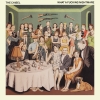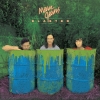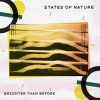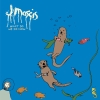Gig Reviews
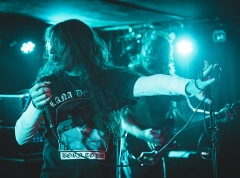
Cult Leader
Stengade, Copenhagen, DEN - 15/4
Album Reviews
A peek behind the curtains at Vega
Previous Nextauthor HES date 10/10/14
The local Copenhagen venue Vega is iconic in many rights. Known primarily for its intimate feeling at all floors and supreme acoustics, Vega was once a completely different building with a different history, turned concert venue which eventually led to its saving feat. We took a tour of the building a late, rare afternoon where the venue was not fully booked with live acts, to really get into the mindset of the people who run one of our favourite venues for live music in Copenhagen. Our guide of the night is Vega’s executive manager Nikolaj Muldkjær, who does not only ooze of professionalism, but also has an extremely vast knowledge and interest in the historical building.
.jpg)
View from Store Vega Stage. All photos by Philip B. Hansen
Vega's history is for the most part very political in nature and has at times both been the headquarters of the Danish Workers Movement and at other times a literal room of convenience for all local socialist movements. The blueprints and designs of architect Wilhelm Lauritzen were ready already before the Second World War, but were put on hold like most endeavors commonly are during wartime. Constructions were finally finished in 1956 under the name of “Folkets Hus” or "The People's House", initially to cater to the workers as an affordable space to rent for private events, birthdays, weddings and the like. Architect Wilhelm Lauritzen, being one of the more overlooked functionalist Danish designers, worked with the democratic notions of design, focusing on less frills and honest materials a low brow craftsman could understand. Being an otherwise very stringent man, he was also a butterfly enthusiast - this notion of ease and floatiness is to this day visible in the design of the main stage, Store Vega's floating balcony and high ceilings. The democratic thought of equal accessibility is maintained today by Vega's ticket system that grants all ticket holders access to all areas - balcony or front row.
.jpg)
The FN Hall
When you visit the holy grails of fandom, the V.I.P rooms of Vega, you are sorely underwhelmed. The primary room has a little kitchen, a couple of sofas and a dinner table. And if you have heard of the infamous “riders” or requirements of a certain band, Muldkjær disproves that these are really of the massive stupidity that they are known for in modern age folklore. Muldkjær even goes as far as saying that the bigger the star, the calmer the V.I.P-section: When you have been on the road for days, all you want is a bit of rest, access to a wifi, a Skype call to your loved ones or even a shower. The flute does hum another tune whenever the local band is rounding off a tour or smaller artists play their first gig that isn’t in someone’s mom’s basement. So make sure you’re crashing a local band’s party if you’re into that sort of stuff. The likelyhood of finding Randy Blythe on the phone with his mother is bigger than finding him smoking a bud.
.jpg)
The Backstage Area of Vega
As said before, the architect of this massive building was a fan of function before form, but anyone who has ever been to Vega, challenged with a full bladder, will know that the stair-system is notoriously confusing, somewhat out of a M. C. Escher painting - going all directions and in spite of this, none of them seem to lead to a bathroom. This fact also has to do with the compartmentalisation of Vega: Every square meter is utilized to perfection. But the entirety of this impression is somewhat thwarted due to a feature that has only been added in recent years. When Vega was remodelled to become a concert venue, the massive hall of Vega was divided into two - the two now form the biggest stages of Vega: Store Vega and Lille Vega. Before I was presented with the blueprints of the building I would have almost thought that the two stages were, if not in different spacial dimensions, then at least in some way offset.
.jpg)
Blueprints of Vega
Speaking of stages: Back in the late 90’s, early 00’s Vega was briefly also transformed into a night club every weekend. The tradition was discontinued as the smoking ban kicked in, the financial crisis hit the Copenhagen hipster-wallets hard and the Meat Packing District became a magnet for beard-growing, Harboe-drinking non-conformers of the 10’s. The club-aspirations never really left the Vega management and incidentally we visited the venue on the brink of another club-venture. The popular nightclub is moving from the glamorous upper floors to the more modest conditions at Vega's smallest stage: Ideal Bar. The small front portion of the building was used as a small restaurant during the Labour Movement's days in the building, known for it's "equally bad food and service". The small, windowed bar/restaurant has always been the outwards front of the otherwise impenetrable, concrete surface of the giant building on Enghavevej, but has never been treated like it. By the time anyone realized the room had been neglected it was in such a state, that none of Lauritzens original dark woods or flow was left. But with a collective effort between Vega and architecture firm Barlby + Carlsson, Ideal Bar was recently returned to its Funkis state - you can still see the remnants of an old "food elevator" in the ladies lavatory, where mirrors are now placed.
.jpg)
The Light Bar, adjacent to Lille Vega
Vega, or Folkets Hus as it was known back in it's socialist days, was a pioneering building in many ways, but already in the 50's it was equipped with an intranet. Granted, the tubes were more of actual tubes than the virtual ones we use today, but they were for many years effectively transporting messages between the cryptic, mazelike hallways, hidden doors and less famous halls. However, while messages flew through the hidden tubes, another hidden presence roamed and to this day still roams the historic location. Many things did Lauritzen take into consideration and the fact that a ghost may have been an unintentional guest was honoured by a small plaque in a dark room saying "Struensee". If you're not a native Dane, the infamous name may not ring a bell, but this character was the doctor of our mentally ill king Christian VII. Not only did he assume de facto power in the 1770's, but he also managed to get with the Danish Queen Caroline Matilda. All of this pleasure was however short lived for the poor Struensee as he was executed during a coup, all of this in the barbaric fashion of behanding, beheading and lastly cut into pieces and portrayed on the gallow hills. This gallow hill is now the foundation of Vega's concrete framework. To this day employees of the venue swear to be hearing unsettling sounds when working alone in the big, empty building. They do however seek comfort in the fact that someone is looking after their building with them.
.jpg)
Lobby of Store Vega
Speaking of strange sounds; If you have ever been at the venue a bit early you may have experienced a loud, machine-like sound. But rest assured, it is only the floor moving - purposefully. As a rare feature, the main hall today serving as Store Vega's concert hall came equipped with a fully functional moving floorboard. Initially serving as a pit for an orchestra, Vega to this day still utilizes this special function, to raise certain levels of the floor - making Vega the favorite venue of everyone from 1,5 meters to a soaring 2.
You may be impressed by the acoustics of Vega, but I can assure you that it is by absolute default, that the venue today has the both locally and internationally acclaimed sound management that they do. According to our guide Nikolaj Muldkjær, very few efforts have been made to optimize the acoustics of the room since it went from common hall and political speeches to bouncy bass-riffs and double pedals. Yet it still means that when a drunk lead singer of a British band says “I want to play a gig in that weird brown place in Holland”, the tour manager or the sound technician will know exactly what place he’s talking about. Maybe it’s something as simple as a lucky kind of wood paneling, but personally I think it may be Struensee holding his intact hand over the venue. Afterall, he was a pretty rock and roll fella.
.jpg)
One of Vega’s many bars
Needless to say, Vega and Tuborg are very good friends. Tuborg allows Vega to use their logo in new and inventive ways, that keep in line with the functionalism and old woodwork of the house. But surely this is not a one way street. Vega is the venue in Denmark with the highest number of beer tabs per guest. Unlike other Danish venues like Pumpehuset and Beta, “Vega” as a concert arrangement firm is only renting the premises - they also work with paid labour whereas many other venues use volunteer bar personnel. This means Vega has to sell quite a few beers to make ends meet. Luckily they have a golden calf: You, dear reader. According to our guide Nikolaj Muldkjær, rock fans are by far the crowd that gulp down most beers and watch more shows than any other segment. But don’t rest on those laurels, our arch-nemesis in the shape of hip hop has lately been chasing our tails in the local championships of beer drinking and concert-going. Our endeavours even manage to pay for some of the weirder, niche bookings and support for upcoming artists. So remember to make a toast to the house ghost next time you visit Vega; you and him are making this whole wondrous labyrinth of sound work.
A special thanks to Vega for the insightful tour. Should you wish to see the insides of the concrete wonderland, Nikolaj Muldkjær is arranging a monthly tour, so far there are tickets available for October, November and December.
 Twitter
Twitter Facebook
Facebook

